Bells play myriad roles in people's lives. They hold special functions in many religions. For Christians, church bells have been calling the faithful to mass or worship for over one and a half millennia. In everyday life, bells signal the passing of time, or when rung in alarm, the approach of danger: flash floods, storms or fire.
Bells in church towers and cemeteries are used to announce the news of death. At the same time, they are also used to convey joy when rung at the beginning of commemorative years, or the election of a new Pope.
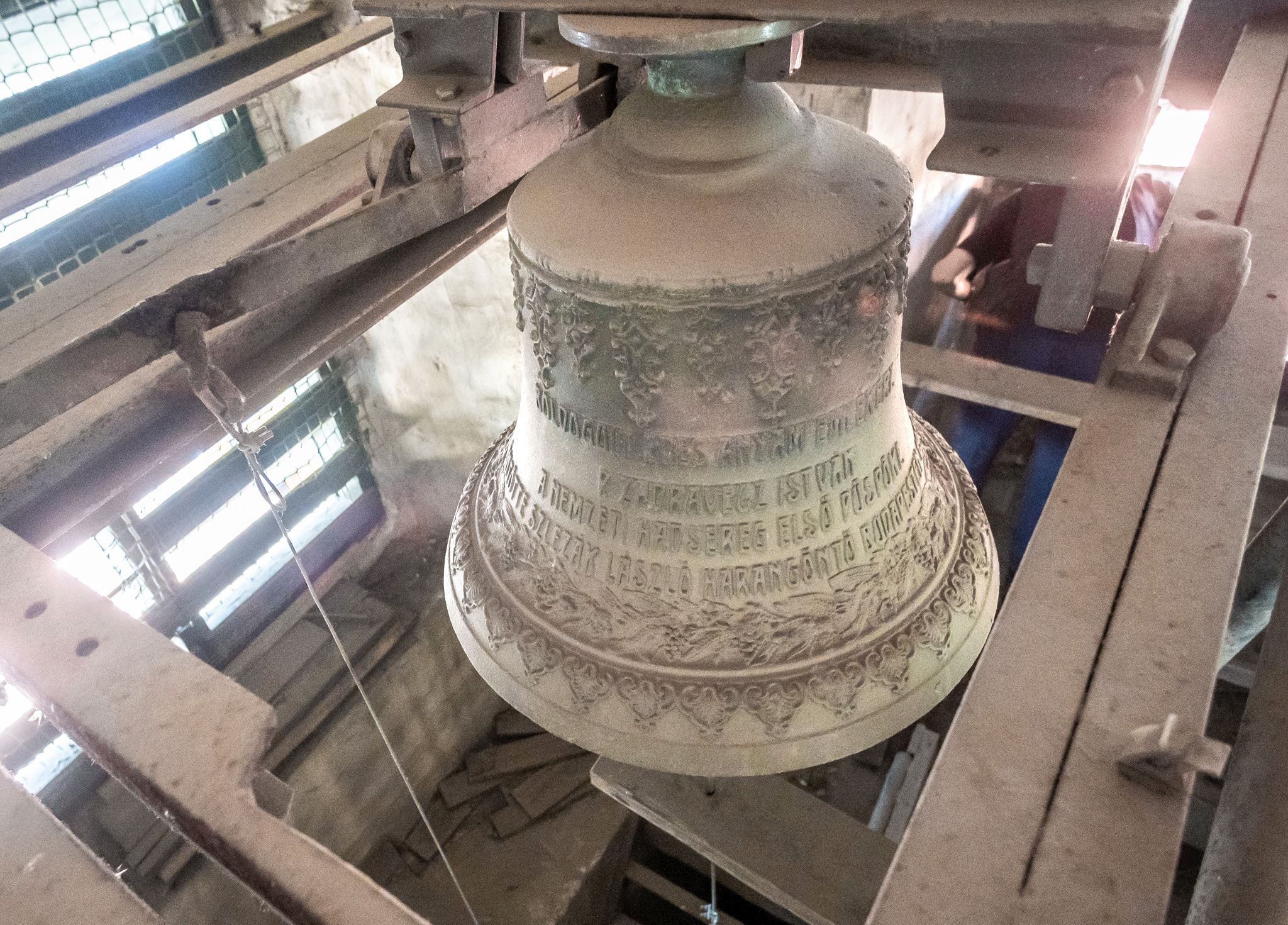 The bell in the Franciscan Church of Országút (Photo: Balázs Both/pestbuda.hu)
The bell in the Franciscan Church of Országút (Photo: Balázs Both/pestbuda.hu)
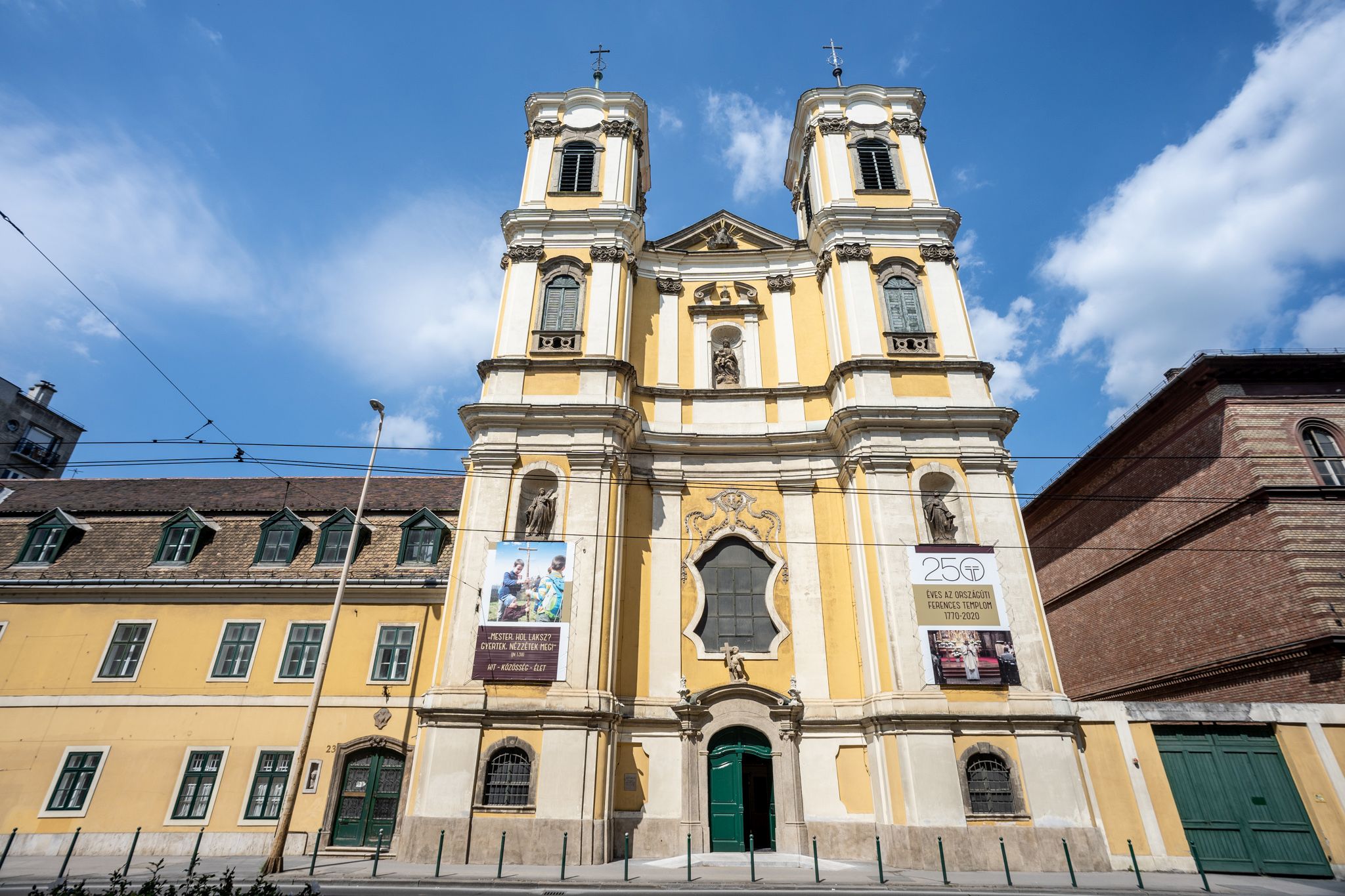
The Franciscan Church of Saint Stephen Protomartyr in Országút (Photo: Balázs Both/pestbuda.hu)
In the 19th century, technical advances allowed bells to be used as signals at railway stations, in horse racing, and even in zoos. As electricity spread, sirens, loudspeakers and alarms took over from bells as signals in everyday life. Nevertheless, their religious roles have survived to the 21st century. For nearly 1500 years bells were only cast form bronze. However, since the middle of the 19th-century steel, and the end of the 20th century, aluminium bells also appeared.
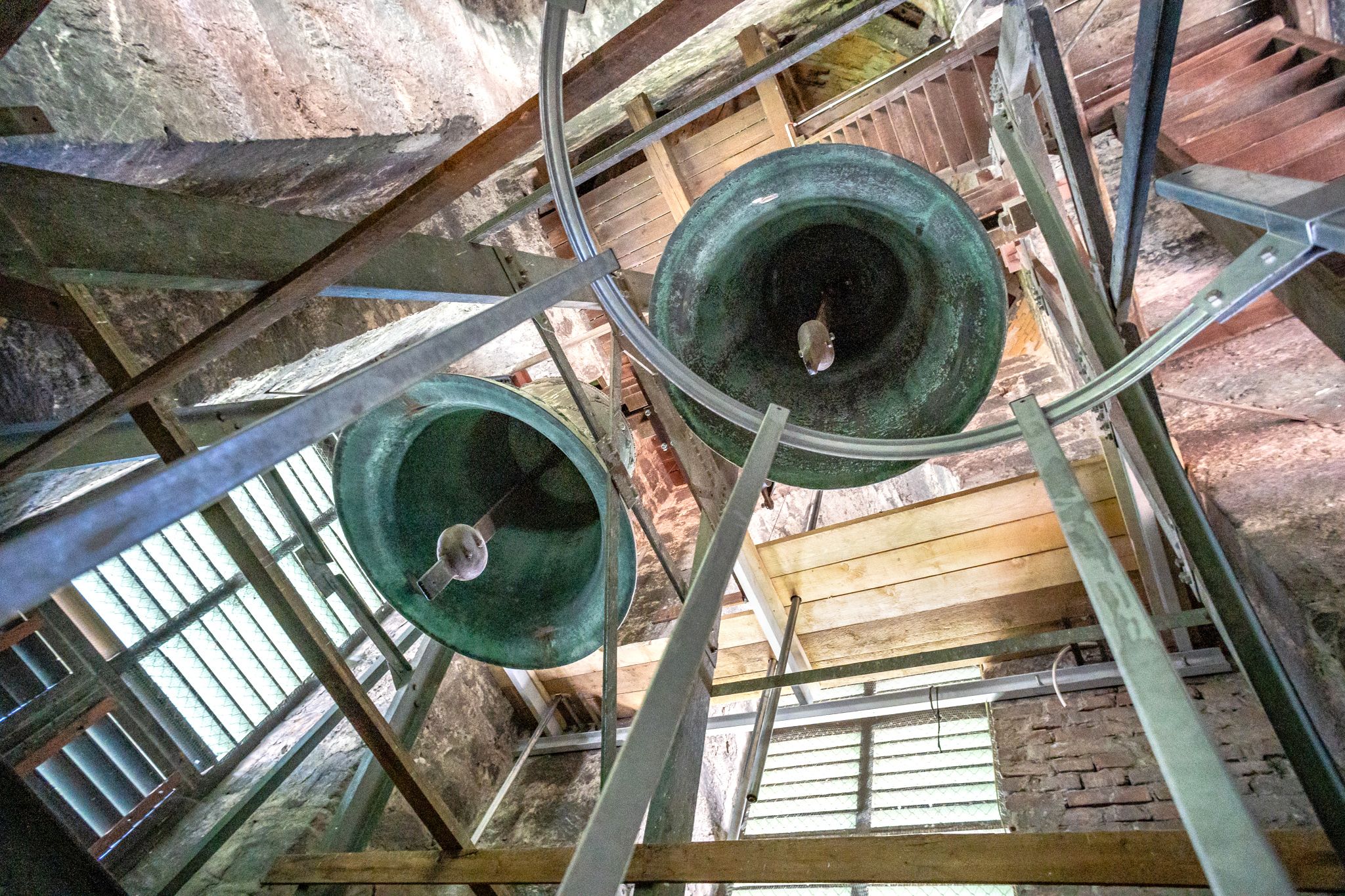
The bell of the Inner City Parish Church in Pest (Photo: Balázs Both/pestbuda.hu)
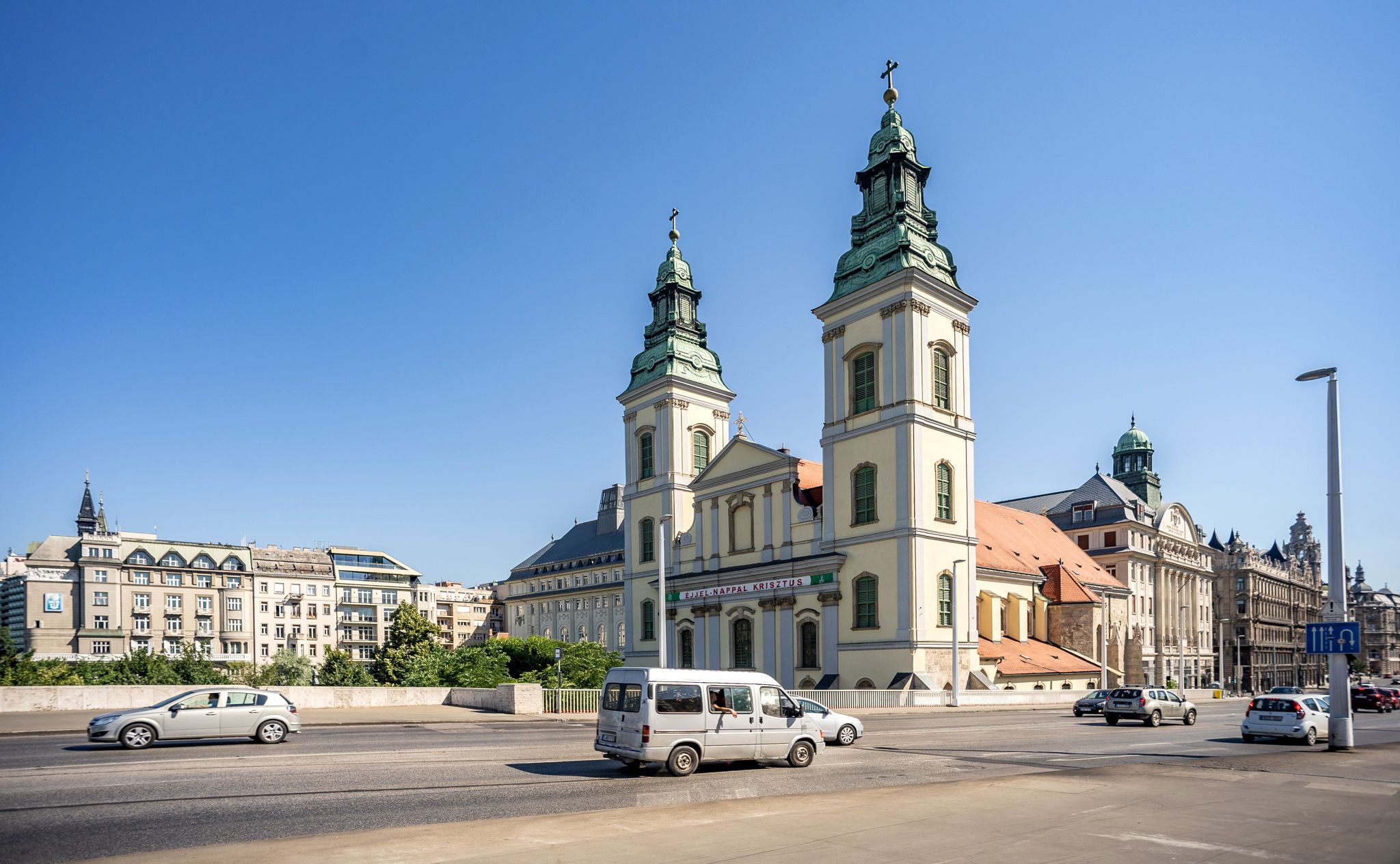 The Inner City Parish Church in Pest (Photo: Balázs Both/pestbuda.hu)
The Inner City Parish Church in Pest (Photo: Balázs Both/pestbuda.hu)
László Szlezák cast the majority of bells used in churches around Hungary, especially Budapest – at least one of his works can be found in each District of the city, not only in religious buildings but hospitals and cemeteries.
Hungarian bells - shapes and inscriptions
No inscriptions or reliefs have been found on Hungarian bells pre-dating the 14th century. In this period, the shape of the bell provides the most information about its age. The oldest known Hungarian bell was found in 1966 outside of Csolnok. The beehive-shaped bell found during the ploughing of a field was likely cast in the 11th century. Bells from the 13th century were most often cast in what is known as the sugarloaf form – the bell found near Keresetpuszta in the 1870s is an example of such.
From the Angevin Period onwards, Hungarian bells mostly bear inscriptions, making bells historical sources. These inscriptions can generally be divided into four categories. They detail who cast the bell, where and when; who commissioned it and why. The fourth category includes themed inscriptions requested by whoever commissioned the bell.
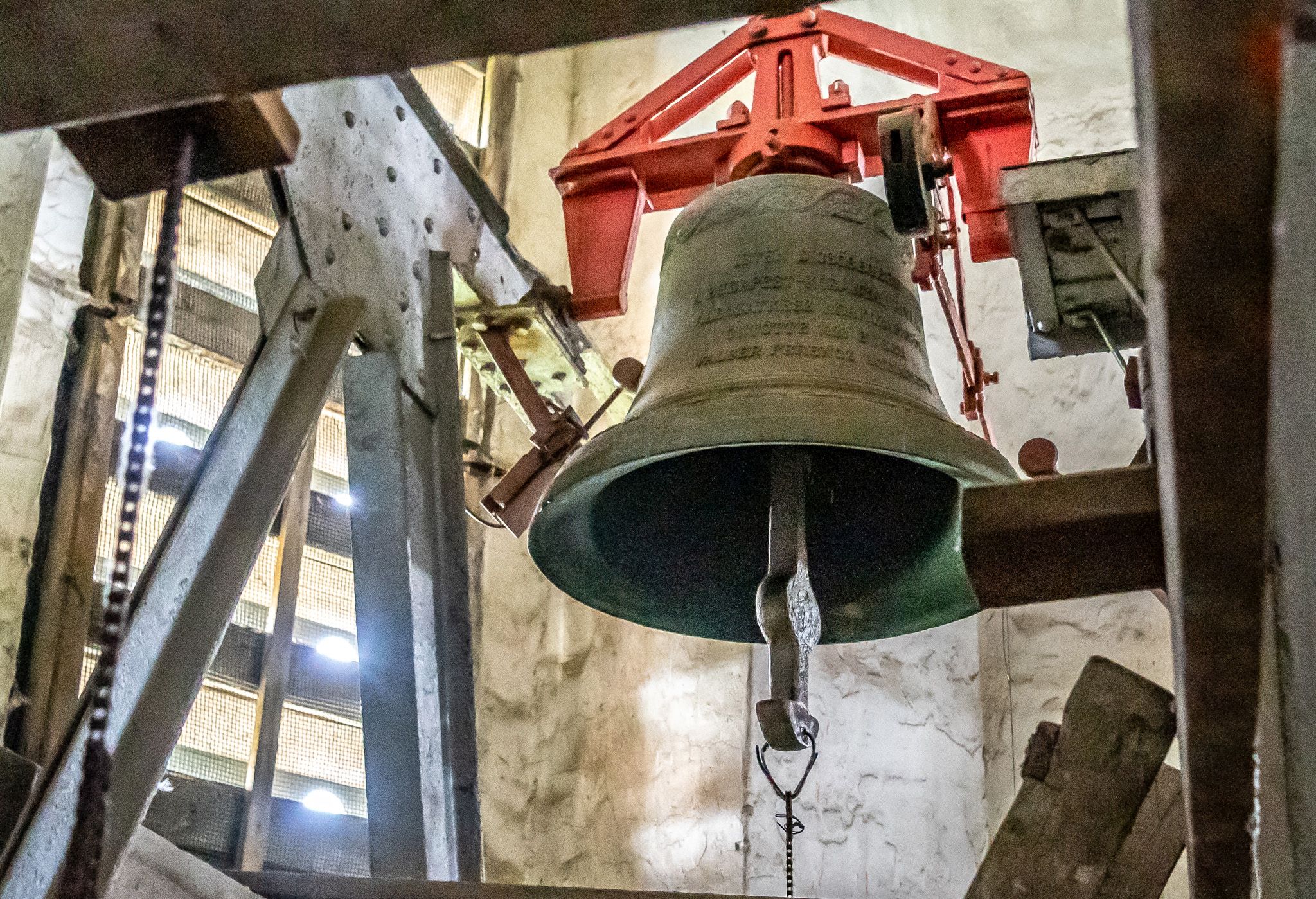
Churchbell in the Church of Saint Ladislaus in Kőbánya (Photo: Balázs Both/pestbuda.hu)
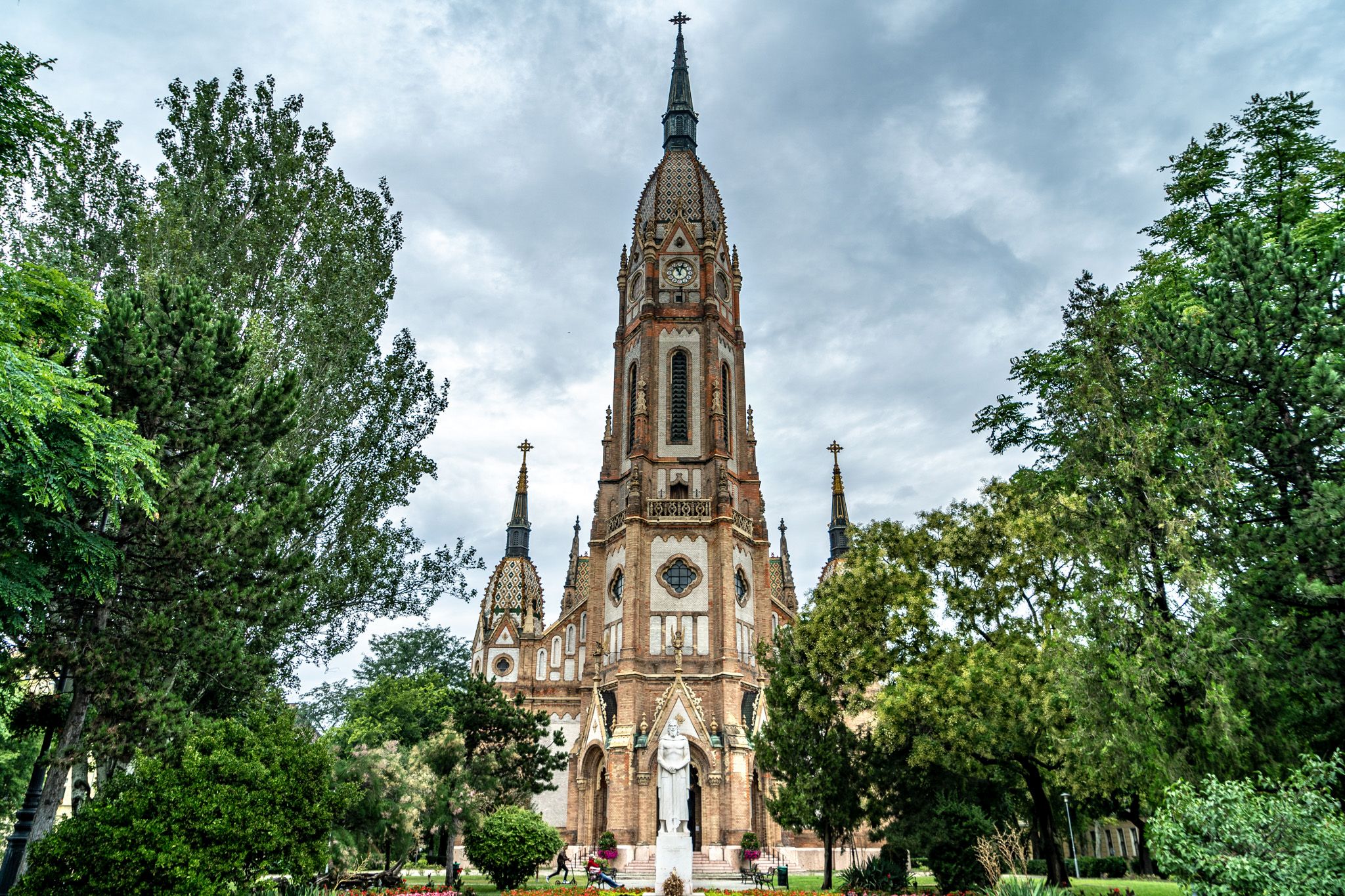
The Church of Saint Ladislaus in Kőbánya (Photo: Balázs Both/pestbuda.hu)
The name of a 13th-century bell-maker is known by historians, while archaeological details of a 15th-century bell and cannon foundry have also been found. However, no bells were cast in Pest or Buda during the Ottoman-occupation, as the invaders methodically destroyed the instruments so important to Christian faith.
Following the reconquest of Buda in 1686 bell-making resumed in Budapest, with the aid of German masters. In the 17th century, the foundries in Pest were larger than those in Buda. It seems that in these workshops, the apprentices would found their own workshops and become competitors of their master while the elders were still alive. In a few cases, the apprentice remained faithful to the workshop and took over from his master on their death.
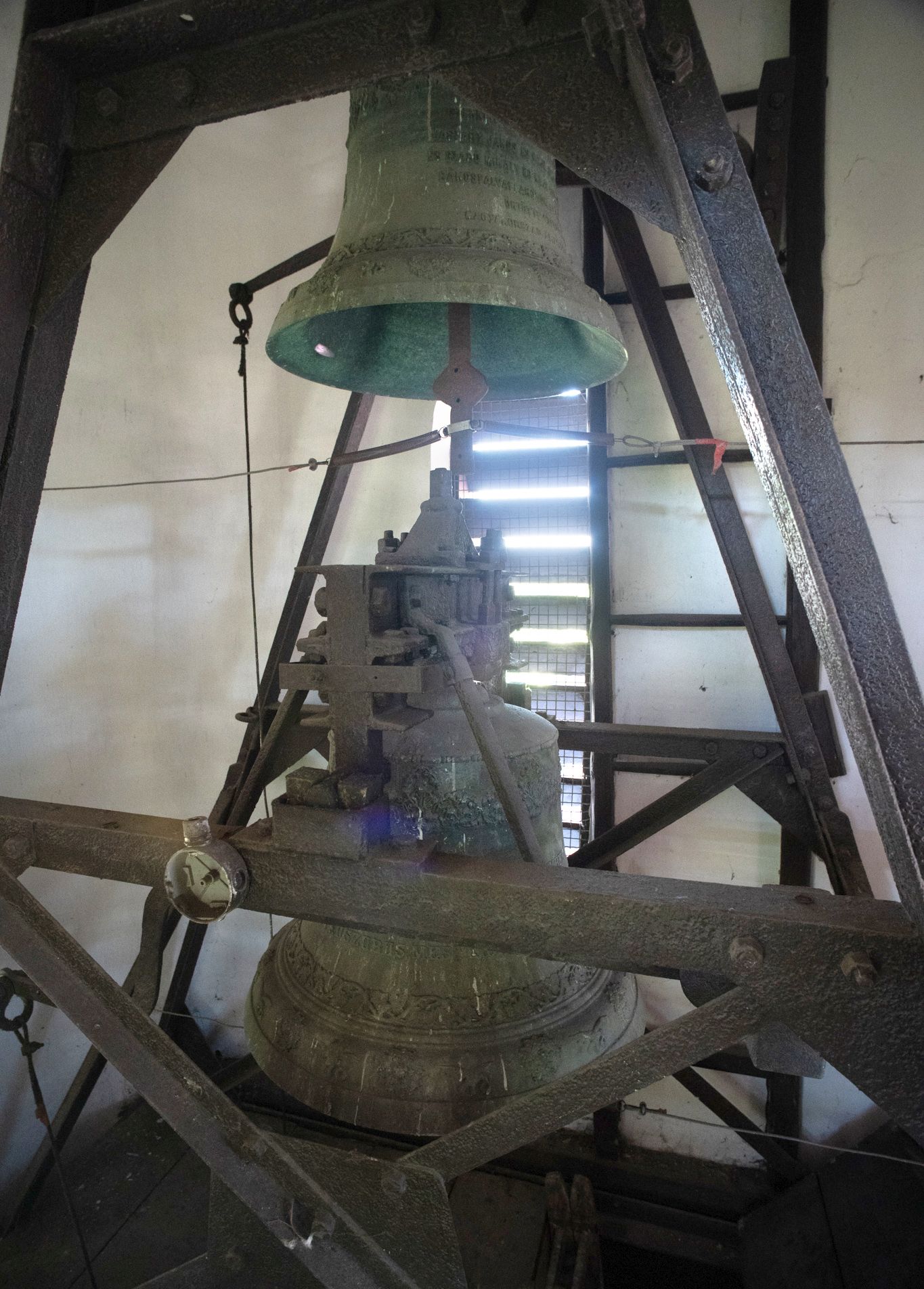
The bell of the Reformed Church of Ráksofalva (Photo: Balázs Both/pestbuda.hu)
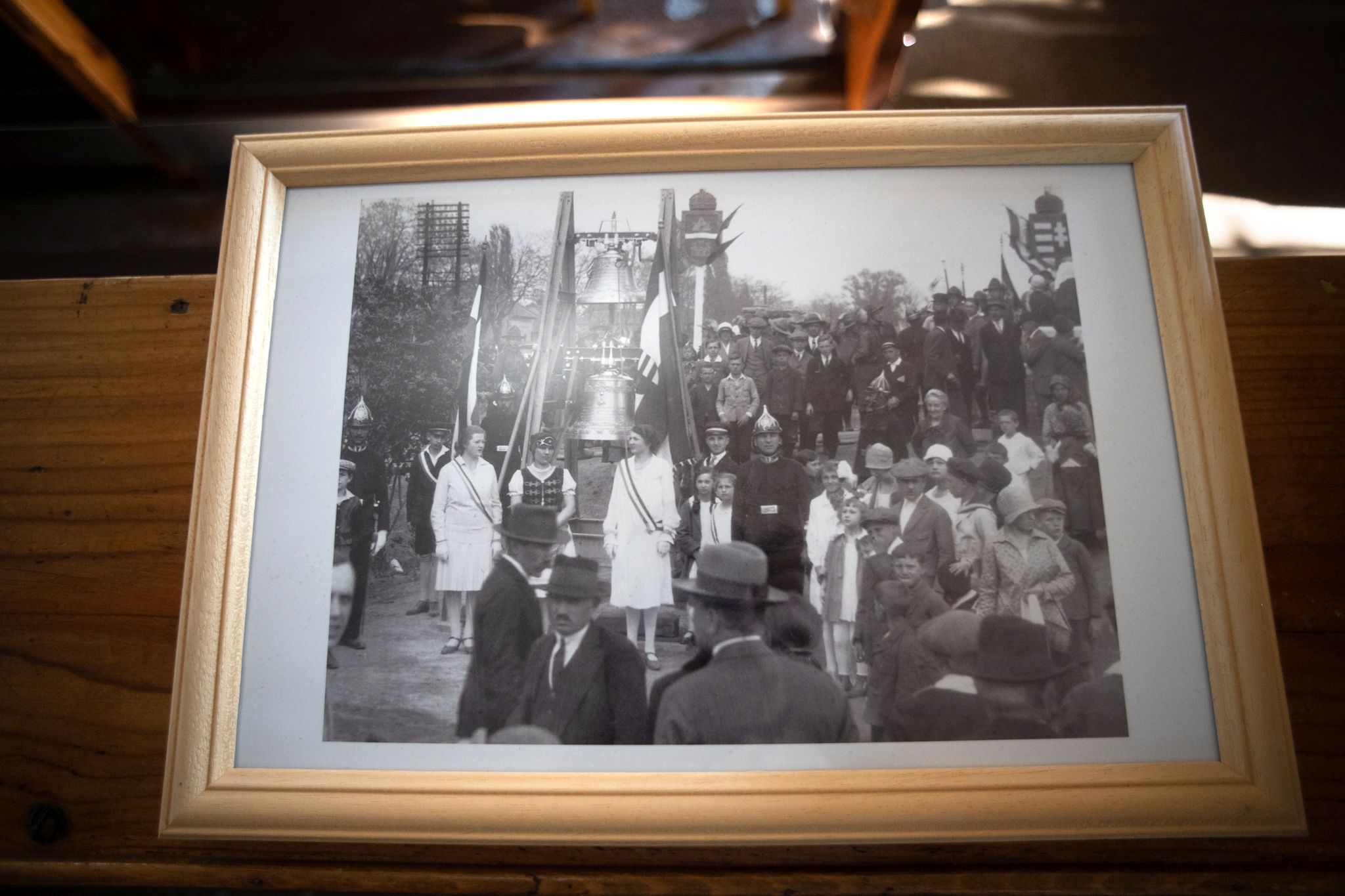
An old photo of the bell in the Reformed Church of Rákosfalva (Photo: Balázs Both/pestbuda.hu)
Examples for both cases can be found in the history of the Szlezák family. Alongside the founder of the dynasty, László Szlezák, his cousin Rafael Szlezák (1887–1959) also opened a bell foundry. Furthermore, László's adopted son and grandchild continued his legacy. The oeuvre of László Szlezák (1870–1953) remains the most significant. His workshop completed over 5000 bells in just 40 years, and his bells account for the largest number of bells in use to the present day.
László Szlezák founds his workshop
The origins of the Szlezák bell foundry can be traced to the workshop of József Pozdech in the middle of the 19th century. The Slovakian Pozdech (1811–1878), originally a locksmith, manufactured support structures with variable speed settings for bells with disc-shaped cannons according to his own patent.
Hungarian bell-making transitioned from looped cannons to disc-shaped cannon in the 19th century. However, most workshops offered rigid support structures that could not be adapted and thus led to increased resonance within the bell tower. Pozdech himself did not cast bells but sold those cast by Austrians masters. His relatives, János Thury (?–1905) and Imre Kosts (1827–1886) continued his work after his death. The latter two were bell-makers.
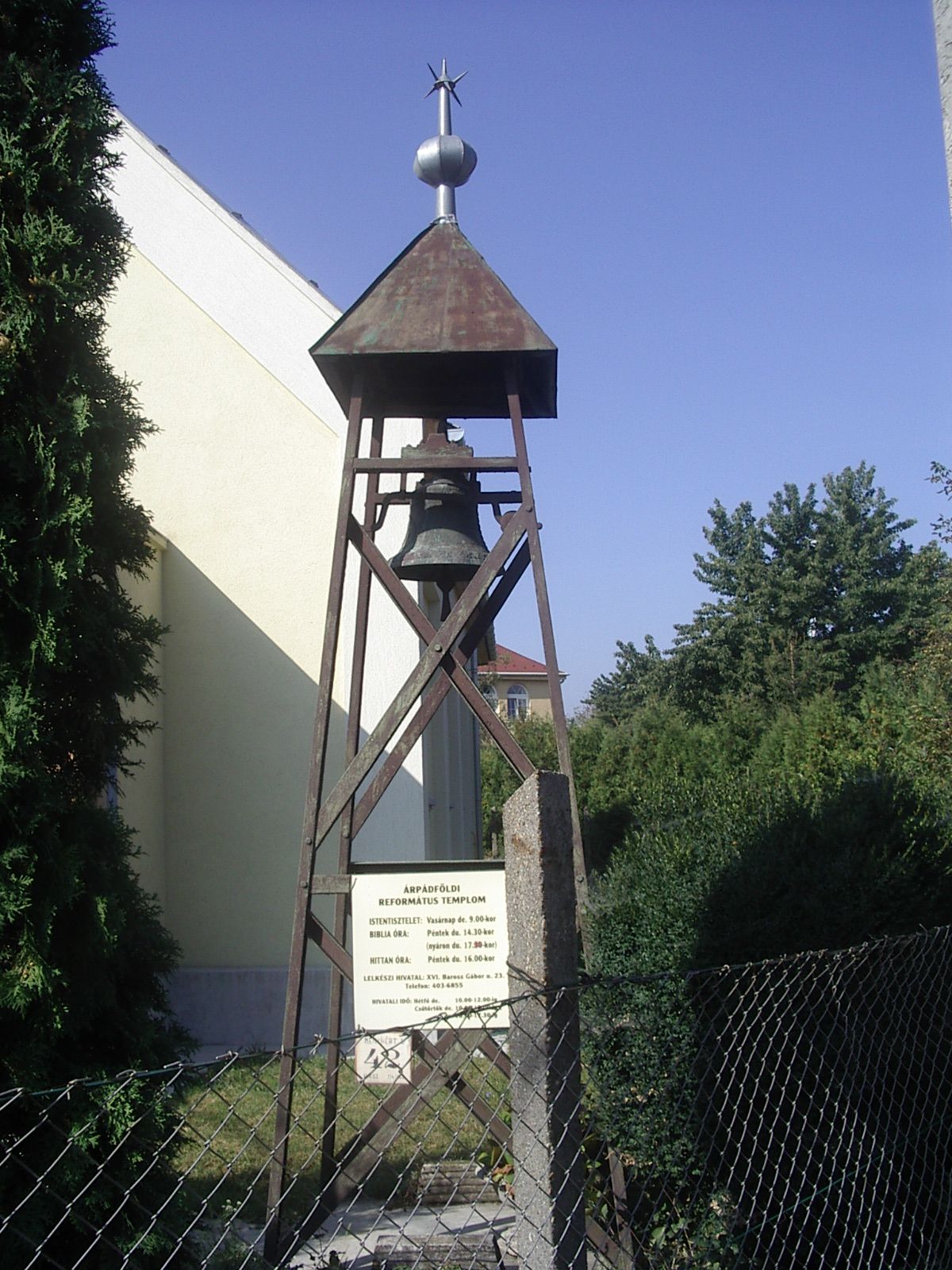
Belfry of the Reformed Church of Árpádföld (Photo: Máté Millisits/pestbuda.hu)
The company operated under the name "The successors to József Pozdech, János Thury and son" and from 1904, Thury's son, János Thury took over the business. He died in 1908, and a bell-maker from Transcarpathia hoped to continue the workshop. Egry Ferenc (1869–1945) operated two workshops for two years, but as he did not receive enough orders to fill two foundries he sold the workshop in Budapest to László Szlezák in 1911.
László Szlezák was born on 9 August 1870 in Ispáca, in Pozsony County (present-day Špačince, Slovakia). In 1884 he became an apprentice under János Thury and a manager in 1902. He stayed with the workshop until 1908 and bought it from Ferenc Egry in 1911.
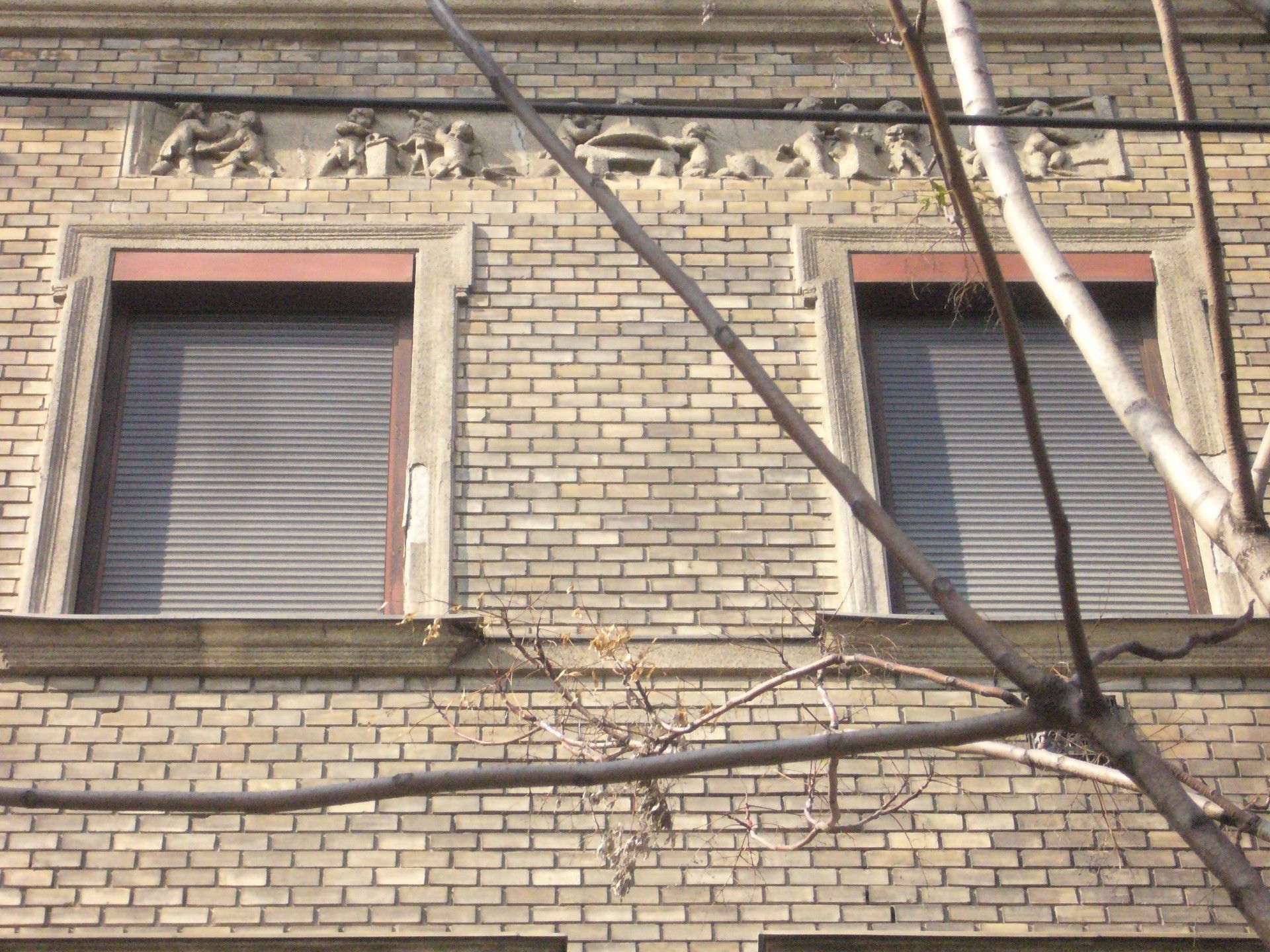
Reliefs depicting a bell casting on the residential building that once housed the Szlezák workshop (Lehel Street 8.) (Photo: Máté Millisits/pestbuda.hu)
The bell for the Reformed Church of Cegléd was cast in the same year and meant the first order for the new workshop. The 1161 kg bell was supported by a cast-iron Pozdech-structure, which Szlezák would use until the 1930s when he switched to steel supports.
In 1914 Szlezák opened a new workshop in the outer parts of Angyalföld, bordered by 78 Petneházy Street and 77 Frangepán Street. At the time there was little use for bell founders in the wartime economy. Szlezák survived though a contract to professionally dismantle the requisitioned bells that were to be reused as raw materials for cannons.
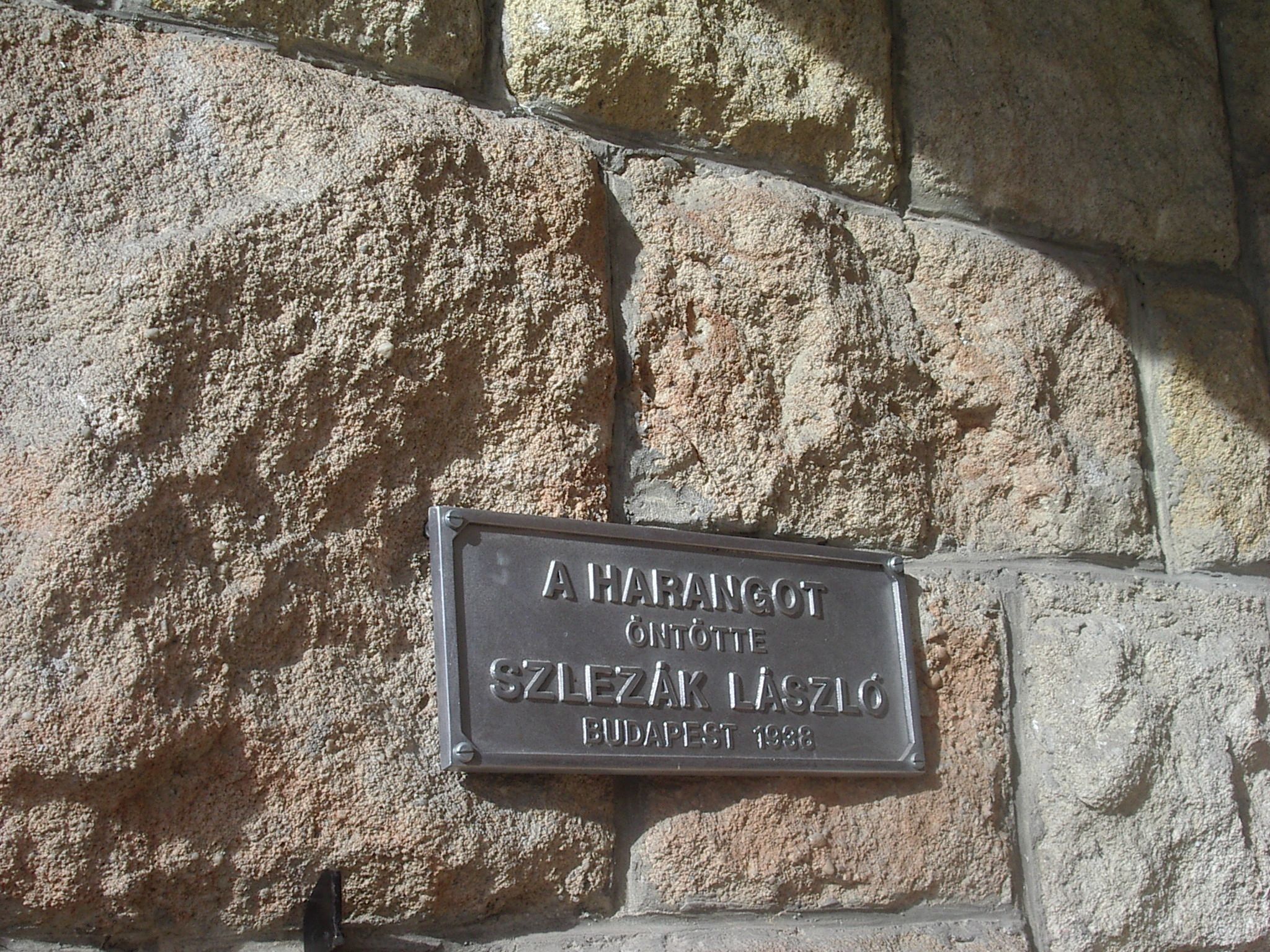 A sign detailed the bell by László Szlezák on exterior wall of the Budapest–Pasarét Reformed Church. Designed by Lajos Szántai, master founder in 2004 (Photo: Máté Millisits/pestbuda.hu)
A sign detailed the bell by László Szlezák on exterior wall of the Budapest–Pasarét Reformed Church. Designed by Lajos Szántai, master founder in 2004 (Photo: Máté Millisits/pestbuda.hu)
The workshop recovered quickly in the years after the war and eventually employed more than 50 people. Five ground ovens were in use, and a flame furnace was built to increase the smelting capacity.
The order notes compiled by László Szlezák from 1920 onwards are of exceptional significance from this period. The digitised copies are available in the Foundry Museum of the MMKM. The books contain detailed notes on the number of orders, their geographical location and denominational affiliation, how those commissioning the bell paid – almost always in instalments –, the yearly income of the workshop, and even the discounts he gave. Details of the commissioned bells are also always given: their site, inscriptions and decorations. Bells from the workshop reached not only many European countries but even Ecuador.
László Szlezák in the 1920s
Bells cast in the 1920s can be recognised based on their characteristic decorations. The lower parts of the waist showed birds holding bay leaves, the centre the decorative elements requested by the customer, and the top was decorated with palmettes. At times customers would request uniquely decorated bells. One of these is the Paprika Bell made for the Franciscan church in Szeged. The defining product of the region was used as decoration because the bell was funded by donations from paprika-growers in the area.
László Szlezák cast the largest bell cast by a Hungarian founder used in a Reformed church in Hungary in 1924 for the Reformed Church of Cegléd. Szlezák also completed a 3600 kg bell for the Franciscan Church of Saint Peter of Alcantara in Budapest. This remains the largest bell in Budapest which was cast in Hungary.
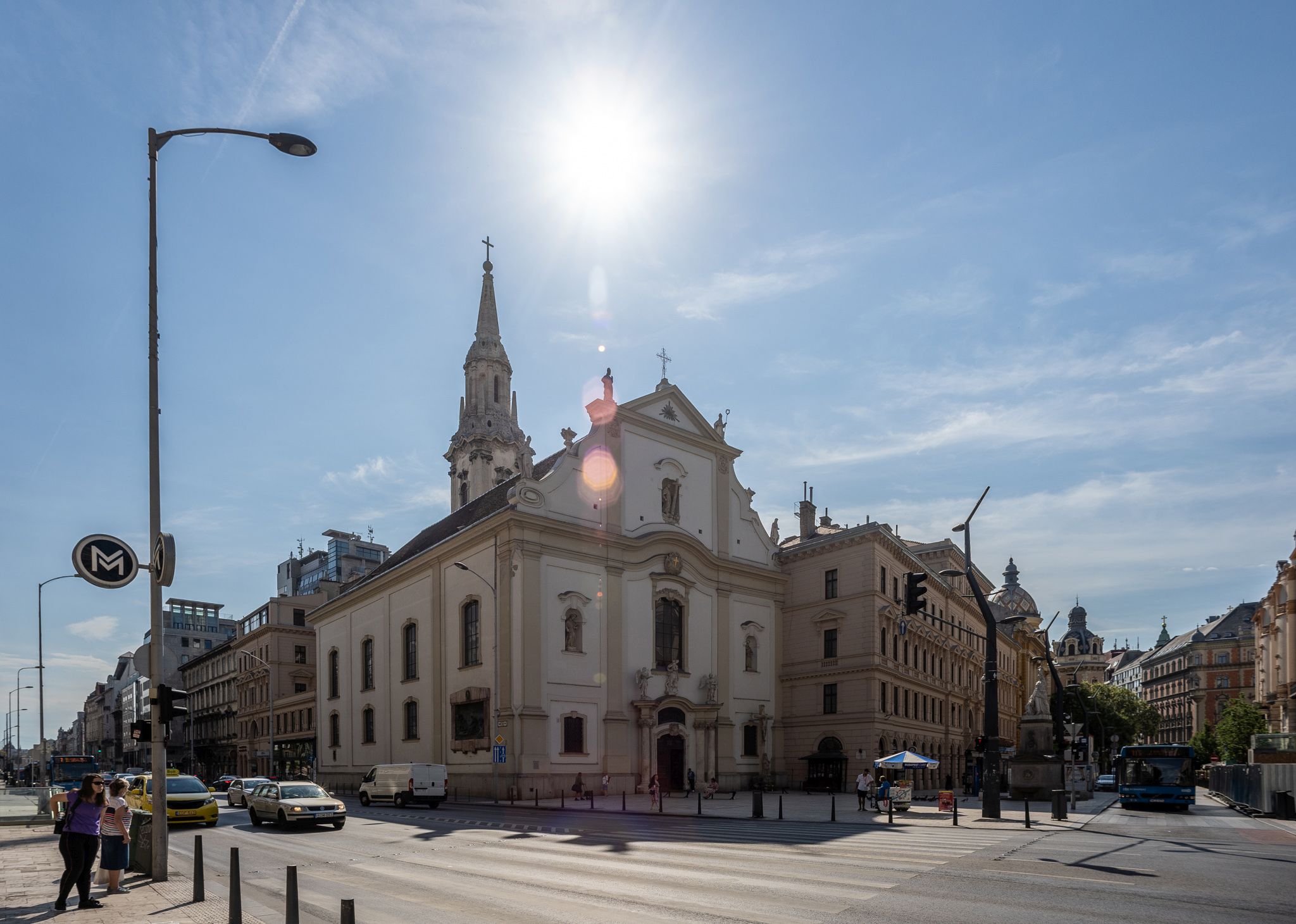 The Franciscan Church of Saint Peter of Alcantara (Photo: Balázs Both/pestbuda.hu)
The Franciscan Church of Saint Peter of Alcantara (Photo: Balázs Both/pestbuda.hu)
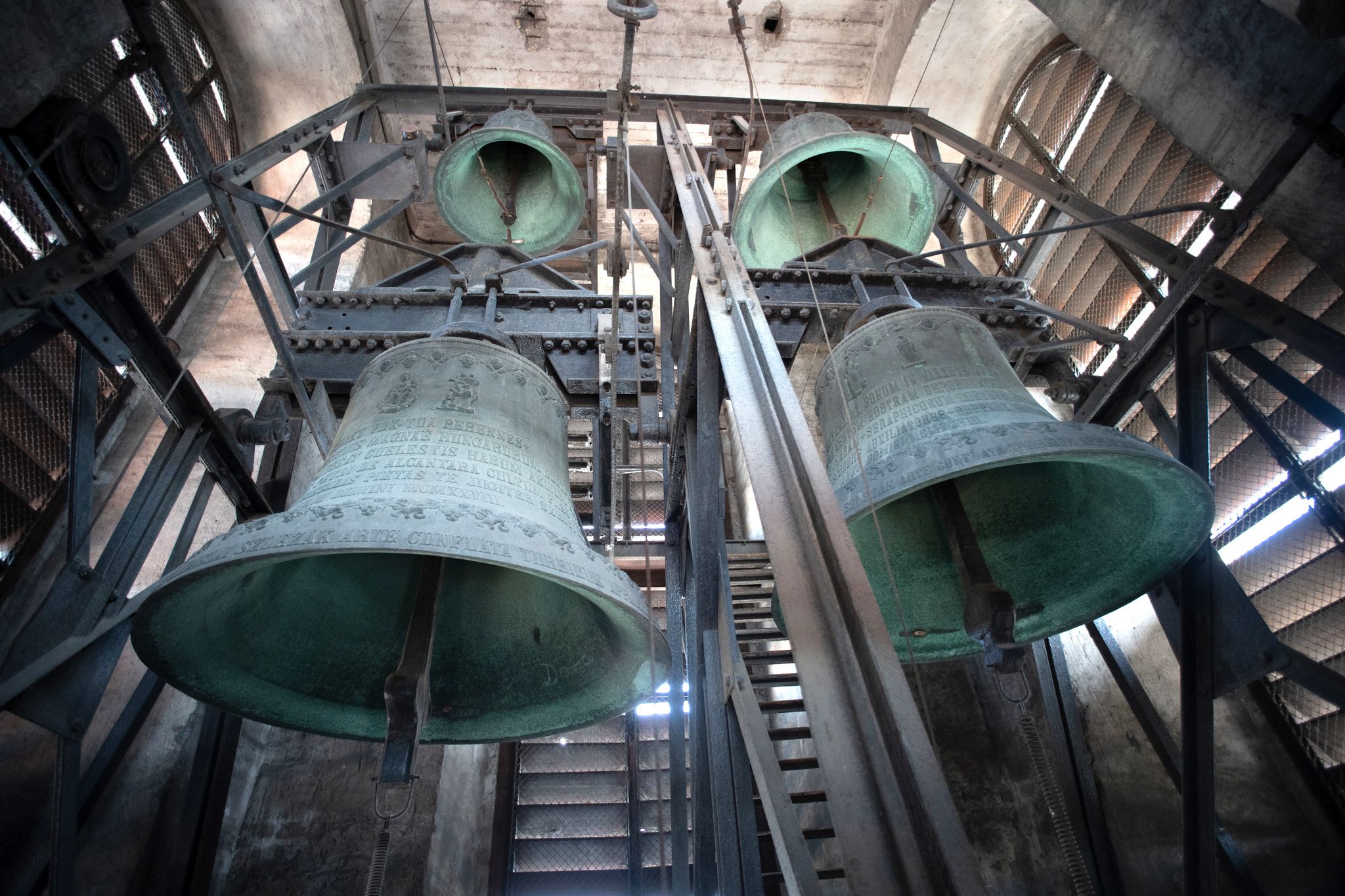 The bells of the Franciscan Church (Photo: Balázs Both/pestbuda.hu)
The bells of the Franciscan Church (Photo: Balázs Both/pestbuda.hu)
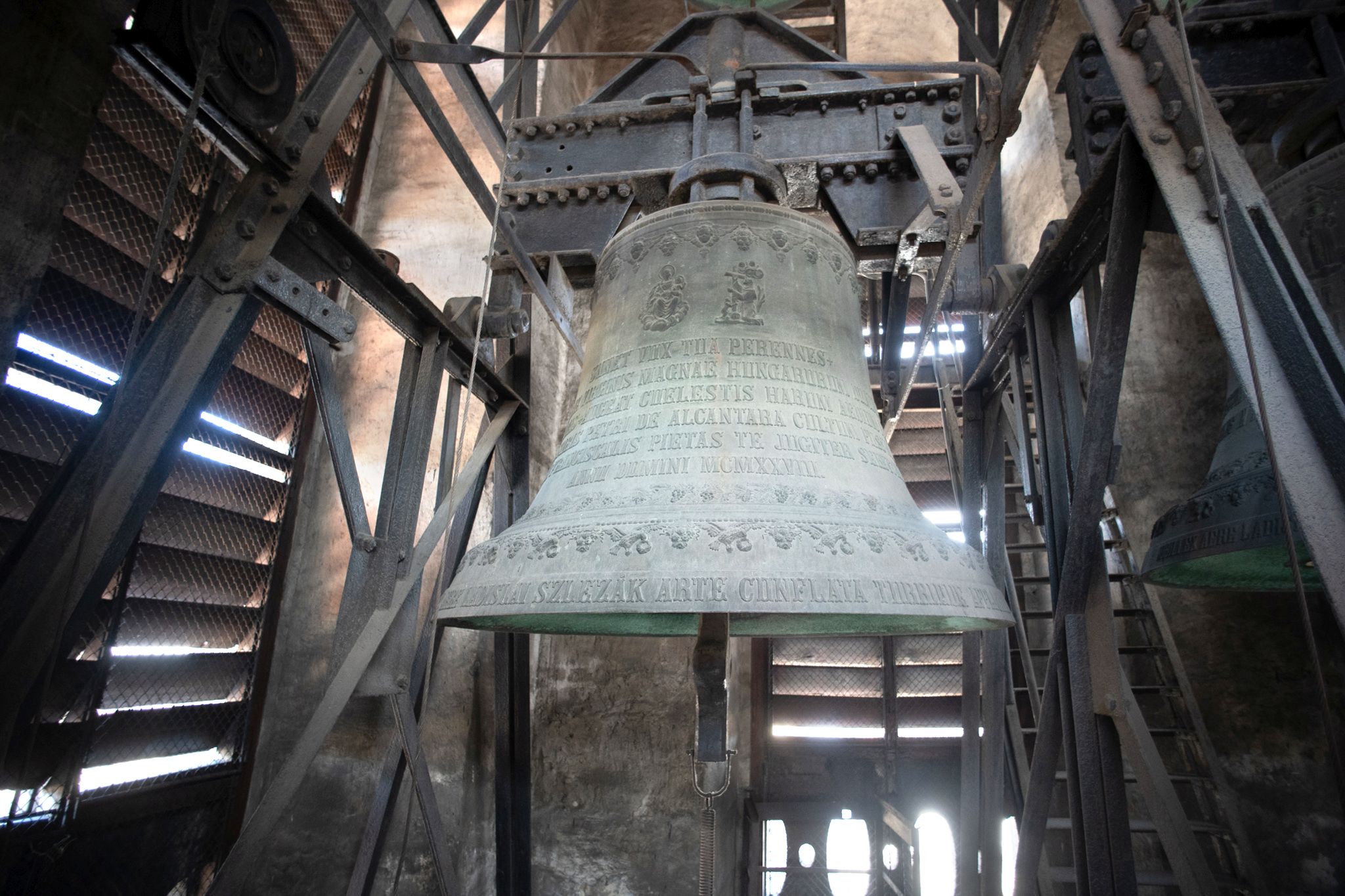
The bell of the Franciscan Church cast in 1928 (Photo: Balázs Both/pestbuda.hu)
In 1928 László Szlezák received the title of master of the Golden Wreath from the National Industry Association, which he marked on every bell he subsequently made. His professional prestige is also underlined by the fact that he serves as Vice-President of the National Association of Industrialists for a time. This resulted in the persecution of the family after the Second World War.
The 1930s
László Szlezák completed his largest ever bell in 1930. Weighing 7945 kg the Saint Emeric Bell was cast for Saint Stephen's Basilica in Budapest but destroyed in World War II.
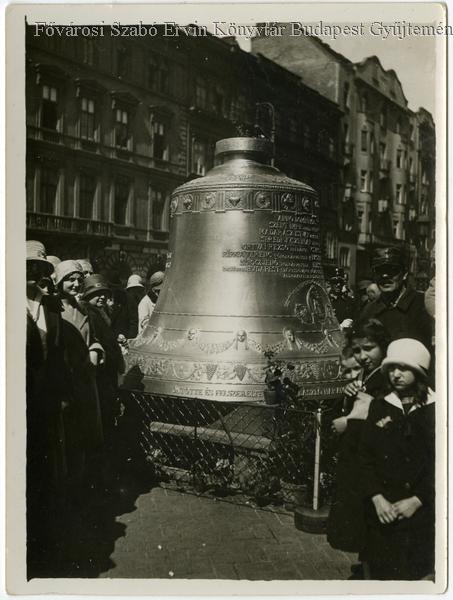
The Saint Emeric Bell was cast by László Szlezák in 1930 (Photo: FSZEK Budapest Collection)
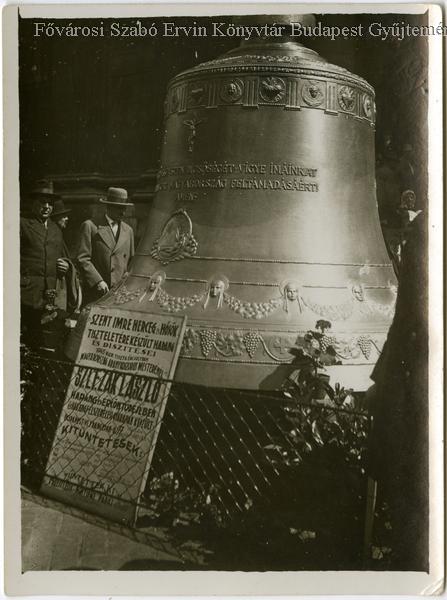
The great bell of the Basilica on 8 May 1930. before it on the ground the board details László Szlezák and the creation of the bell. Cast in honour of Prince Saint Emeric and the Heroes..." (Photo: FSZEK Budapest Collection)
The completion and consecration of the Saint Emeric bell are detailed in Szlezák's notes. The diocese ordered the bell in May 1929 which László Szlezák accepted with the end of the year as a deadline. Nevertheless, the bell was only cast in 1930. The bell cost a total of 42,140 Pengő, of which 10,500 was to be paid upfront, while remaining costs were paid in instalments until 24 March 1931. The consecration of the bell was the first significant event of the Saint Emeric Memorial Year and was performed by prince Primate Justinian Serédi. Following this, László Szlezák received orders for two larger bells (3738 kg and 5827 kg) for the basilicas in Vác and Esztergom.
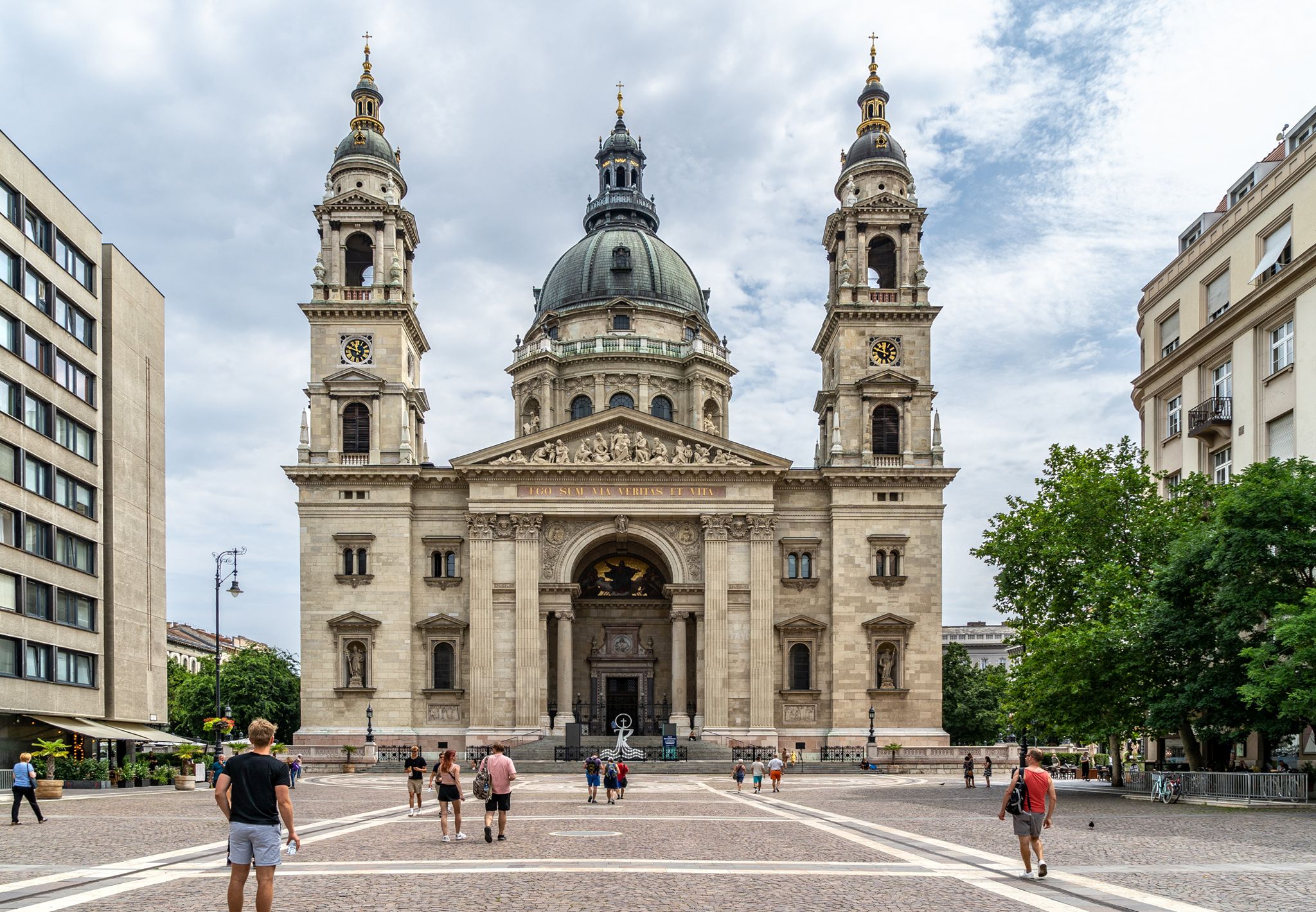 Saint Stephen's Basilica (Photo: Balázs Both/pestbuda.hu)
Saint Stephen's Basilica (Photo: Balázs Both/pestbuda.hu)
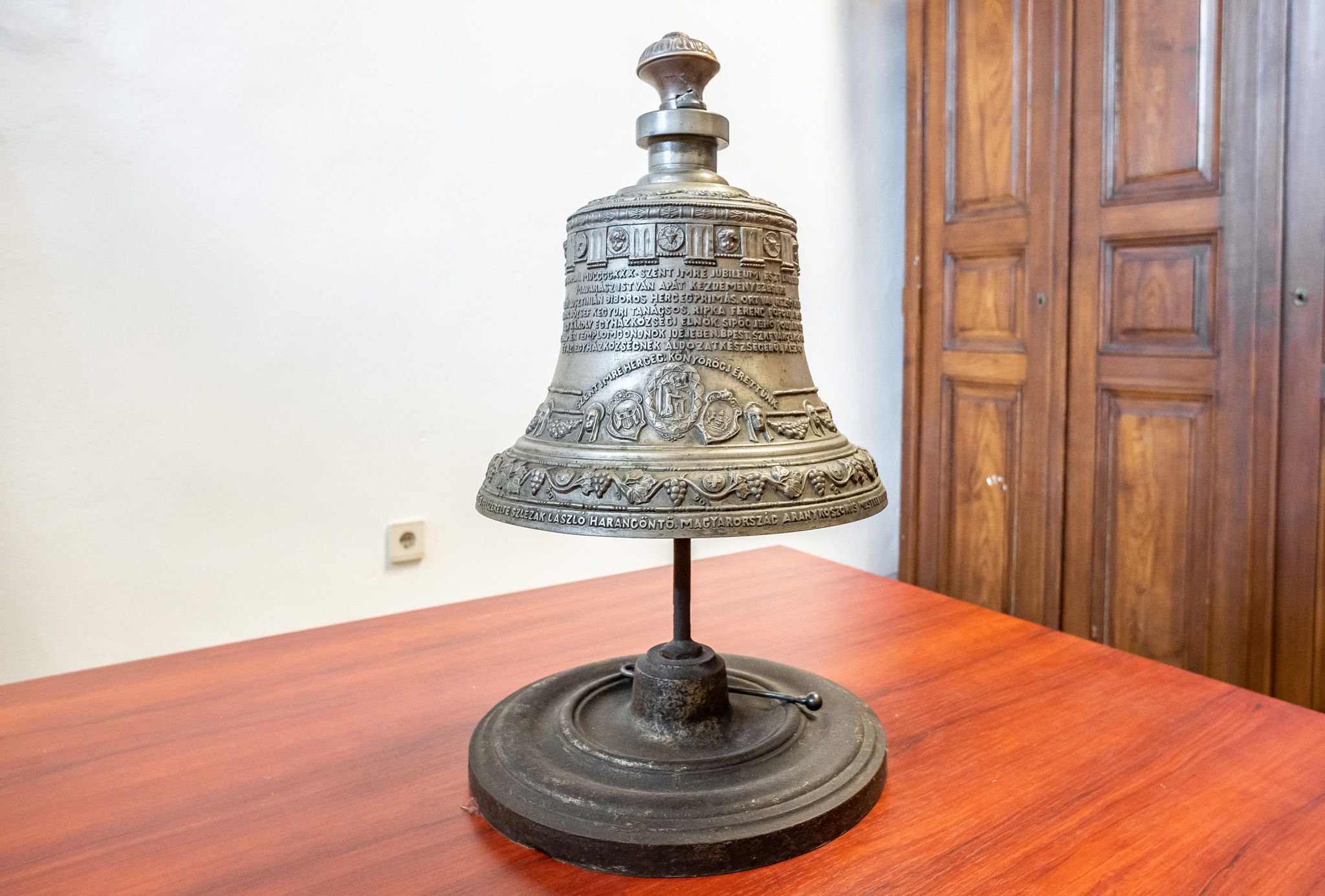
What the great bell of Saint Stephen's Basilica looked like (Photo: Balázs Both/pestbuda.hu)

The Saint Emeric Bell was destroyed in World War II (Photo: Balázs Both/pestbuda.hu)
The decorations of his bells changed in the second half of the 1930s. The lower parts of the bell were decorated with grape-leaf patterns, the central area housed the inscription and decorations requested by the customer. Finally, the upper section depicted a series of laurel wreaths and garlands.
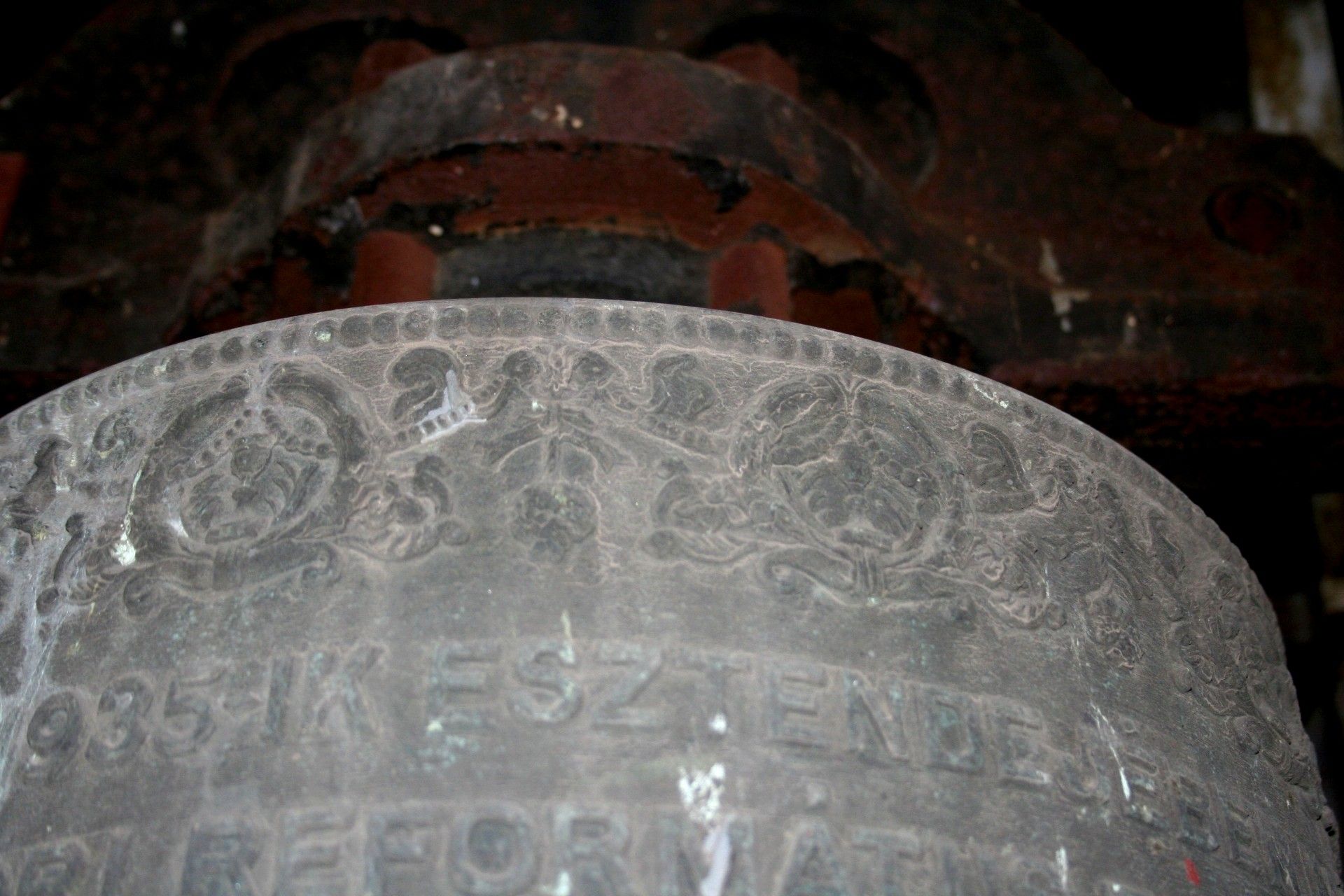
Detail of the bell cast by Szlezák for the Reformed Church on Városliget Avenue in 1935: chalices in laurel wreaths (Photo: Máté Millisits/pestbuda.hu)
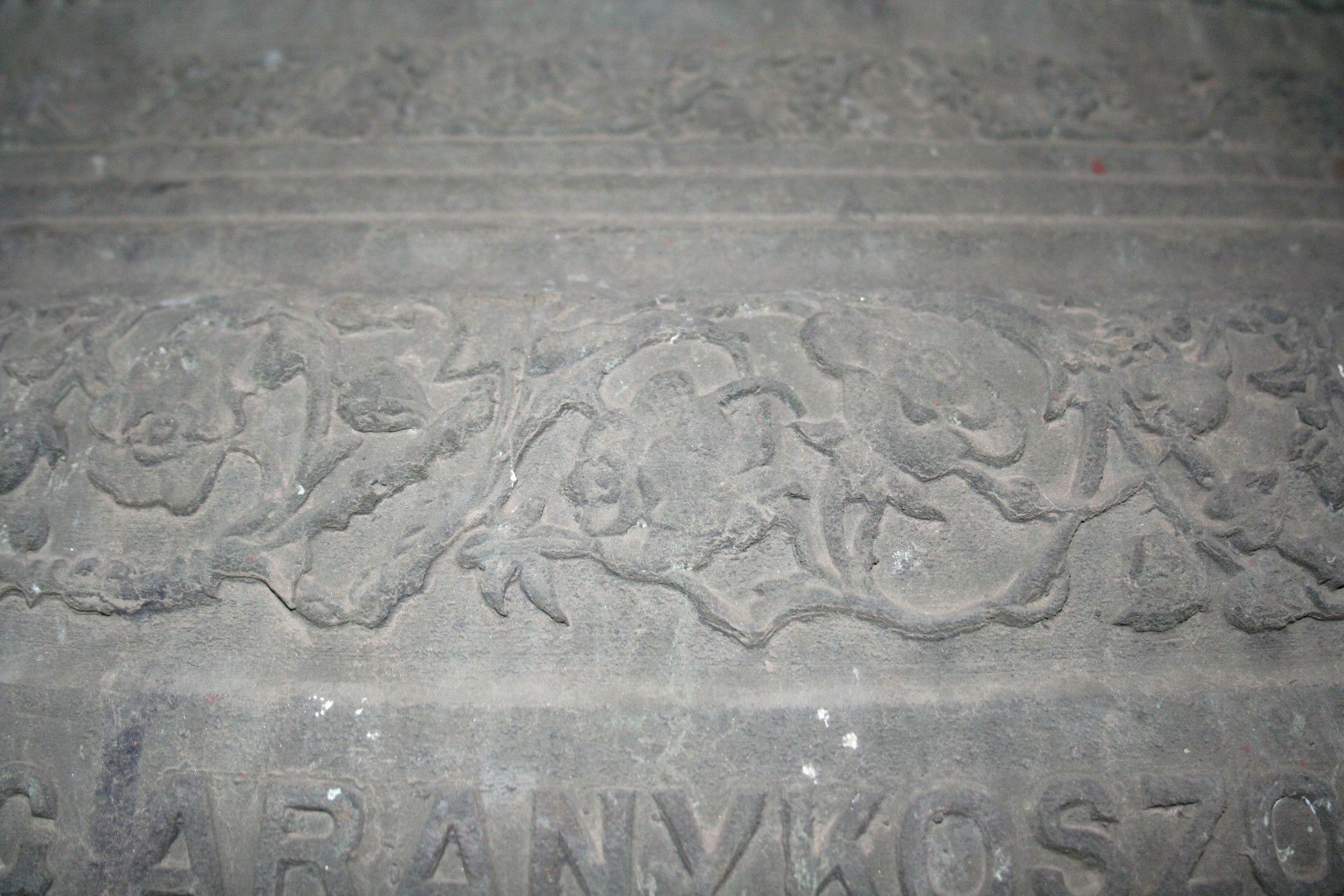
Detail of the bell cast by Szlezák for the Reformed Church on Városliget Avenue in 1935- chalices in laurel wreaths (Photo: Máté Millisits/pestbuda.hu)
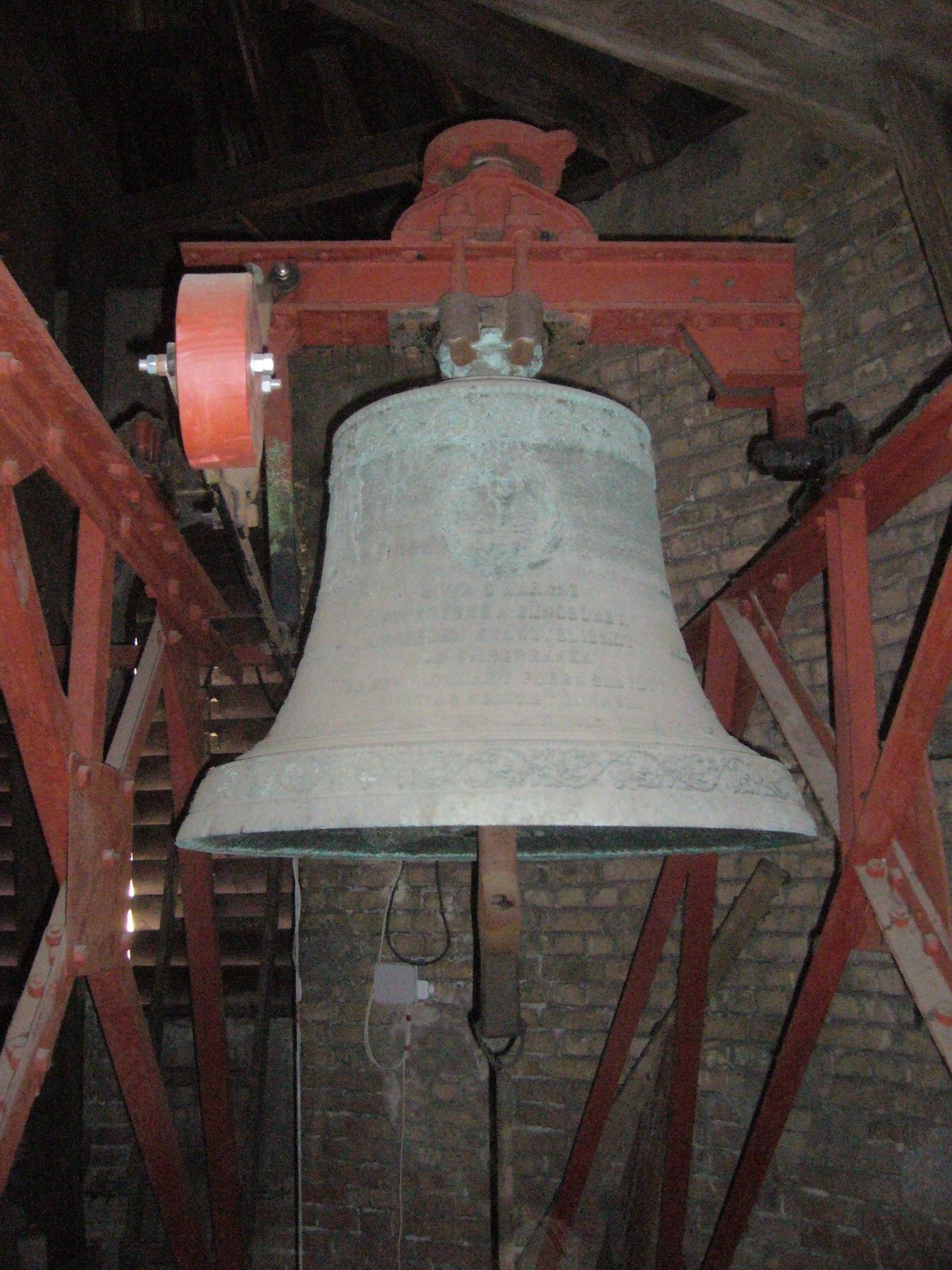
The 500 kg bell cast for the Budapest–Angyalföld Reformed Congregation in 1930 (Photo: Máté Millisits/pestbuda.hu)
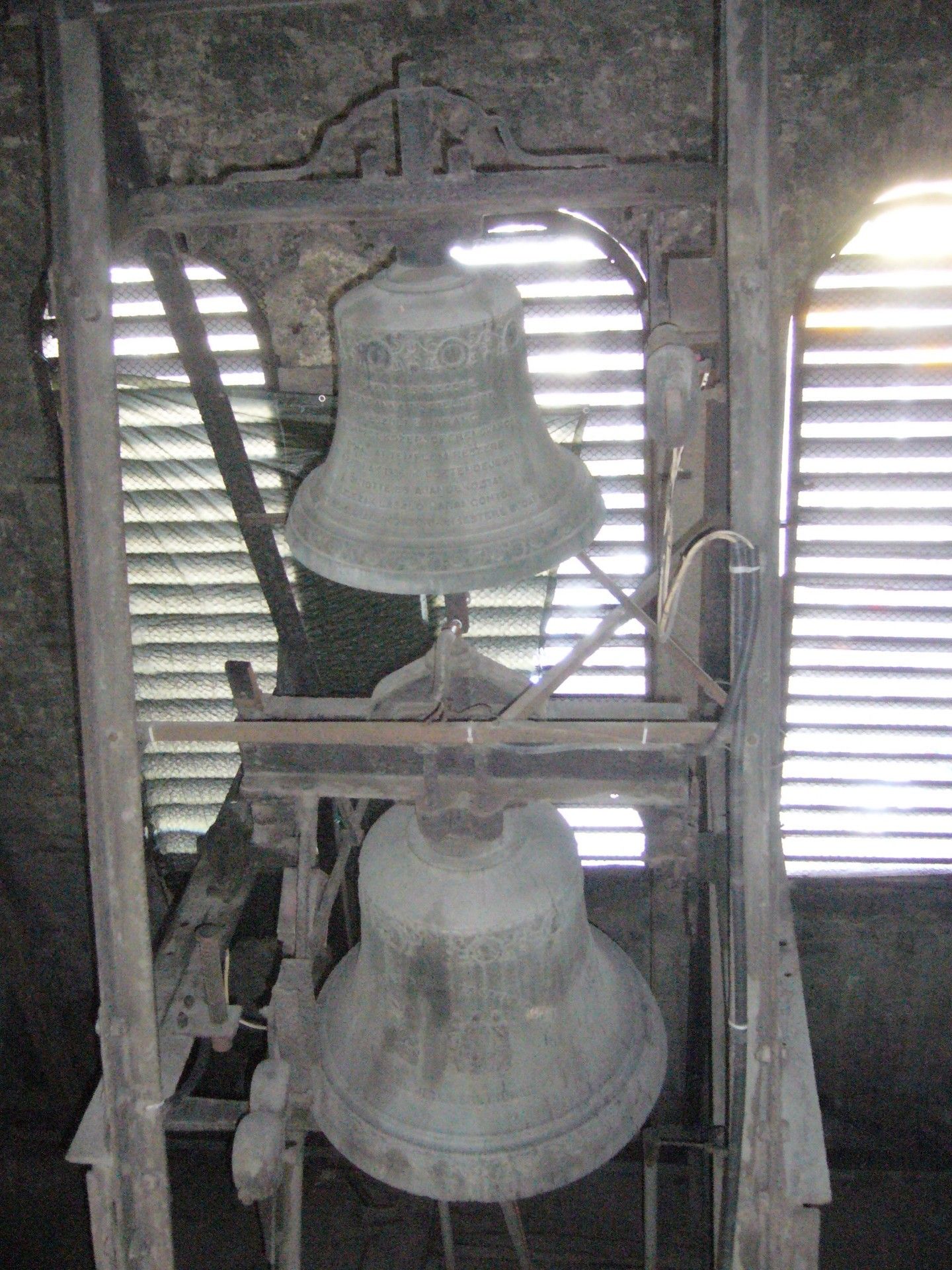
Bells of the Roman Catholic parish church on Haller Street, cast by László Szlezák in 1936 (Photo: Máté Millisits/pestbuda.hu)
The Horthy Bell is one of the workshop's most unique works. Installed in the Reformed Church of Kelenföld the bell includes a relief with the portrait of the Governor Miklós Horthy (1868–1957). From the end of the 1930s, the bell-maker added a production number to each of his bells. These show that the foundry had completed over 5000 bells at the time.
The works of László Szlezák in the 1940s
László Szlezák adopted the son of his second wife, Lajos Gombods (1928–2011) and introduced him to the arts of the craft. In September 1944 the workshop was bombed. The master bell-maker, his son and one of their employees rebuilt the foundry with their own hands. Production restarted within the same year.
The first bell completed after the world was the 700 kg bell for the Church of Saint Ladislaus on Béke Square in 1945. The bells cast for the Reformed Church of Soroksár stands out among those made by the foundry in the second half of the 1940s. They were completed as a gift from Zoltán Tildy, President of the Republic of Hungary in 1948.
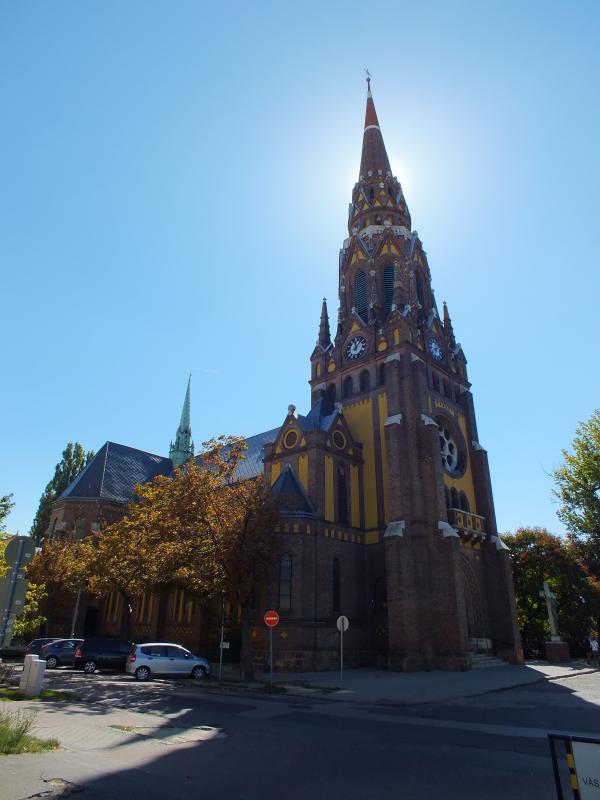
The Church of Saint Ladislaus on Béke Square (13th District) (Photo: miserend.hu)
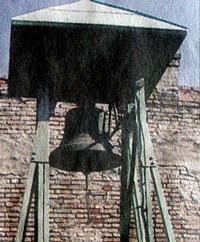
Belfry of the Soroksár Reformed Congregation (Photo: Máté Millisits/pestbuda.hu)
The buildings and equipment used by the foundry were nationalised in 1951. At the time László Szlezák was often ill, and the day-to-day operation was run by his adopted son. The master bell-maker died on 9 August 1953 and was laid to rest in the New Public Cemetery of Rákoskeresztúr. The company continued to operate under the name "The Widow of László Szlezák" for another two years. The foundry was eventually closed in 1955. In 1956 Lajos (Gombos) Szlezák hoped to open his own workshop but did not receive an industrial permit, and was forced to request one through an ex-employee, István Ducsák.
The pair restarted bell-making on a plot in Őrbottyán, not far from Budapest. Eventually, Lajos Gombos received an industrial license in 1970 and operated as the sole bell-maker in Hungary for many years. His son, Miklós Gombos has continued the family craft in a different workshop in Őrbottyán, and his son, Ferenc, is also increasingly involved in the art.
Cover photo: The bell of the Franciscan Church in the Budapest city centre (Photo: Balázs Both/pestbuda.hu)



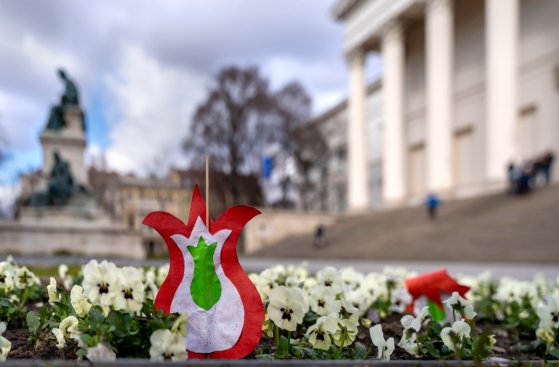

































Hozzászólások
Log in or register to comment!
Login Registration